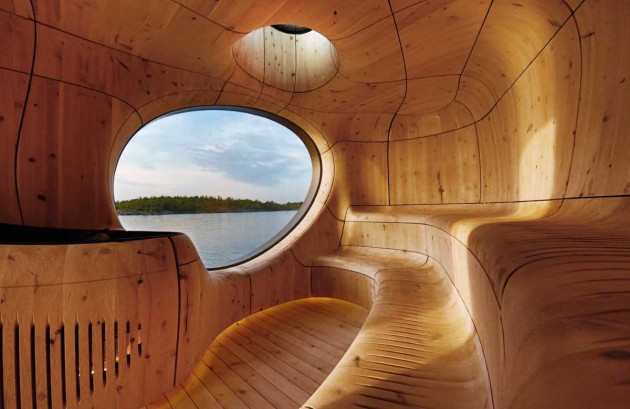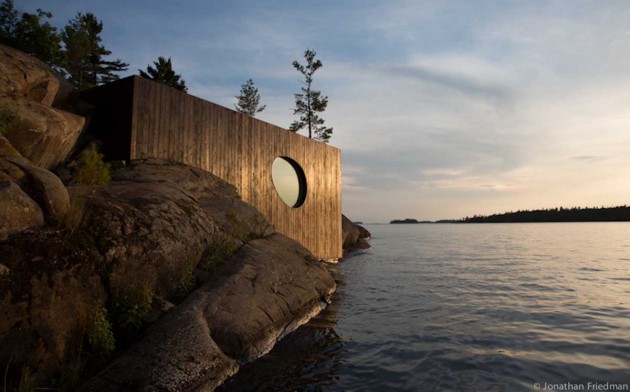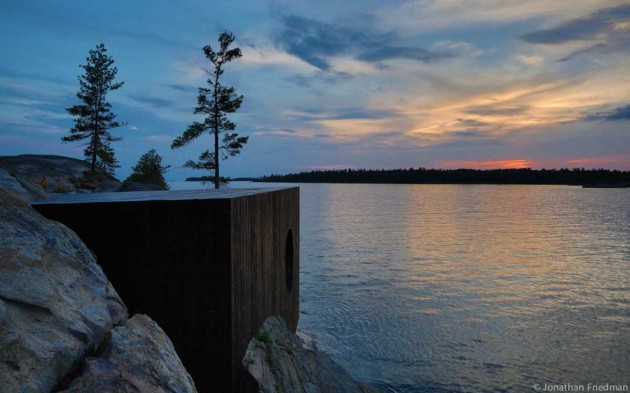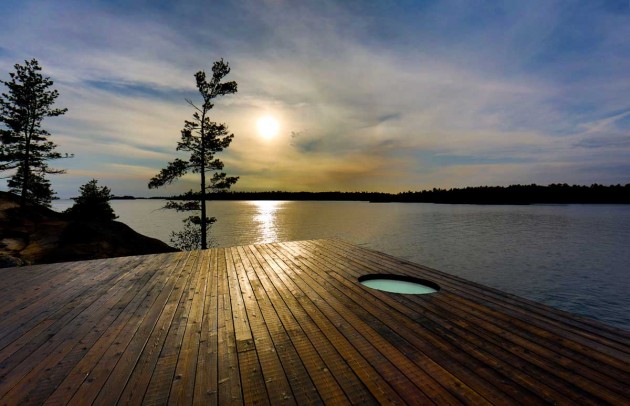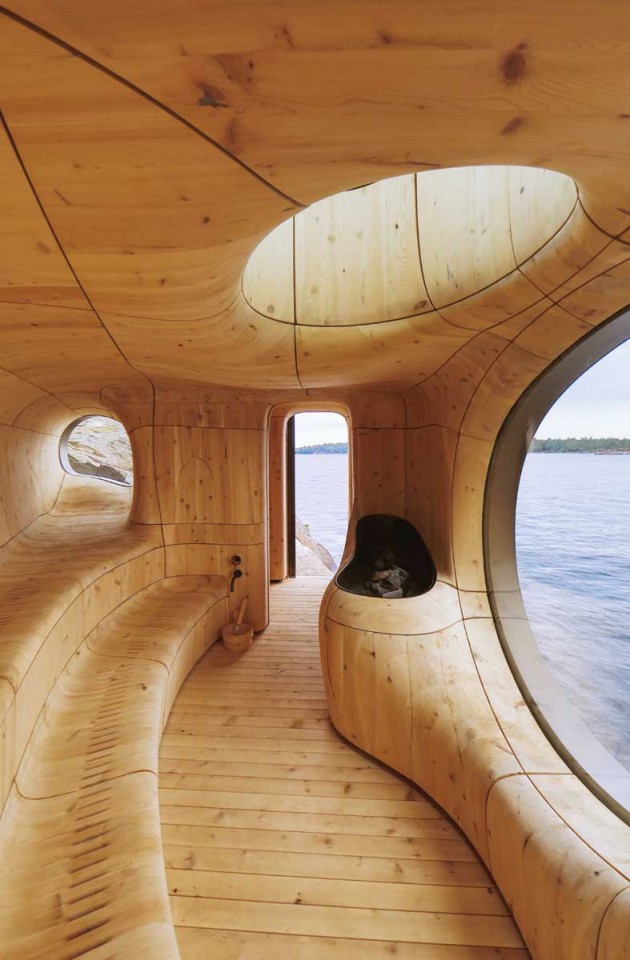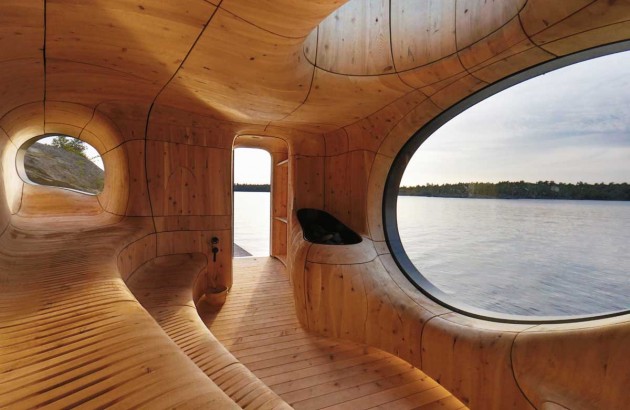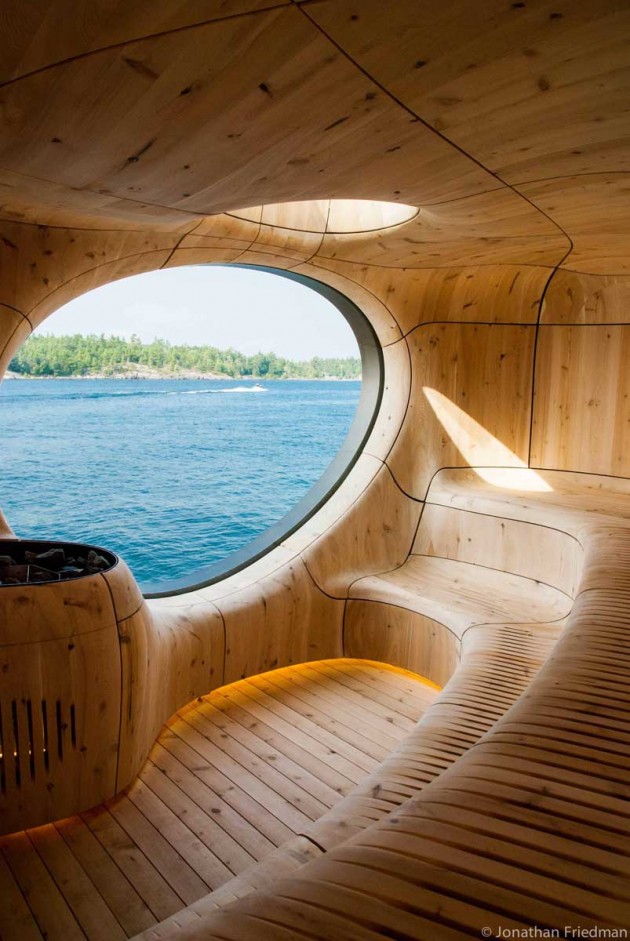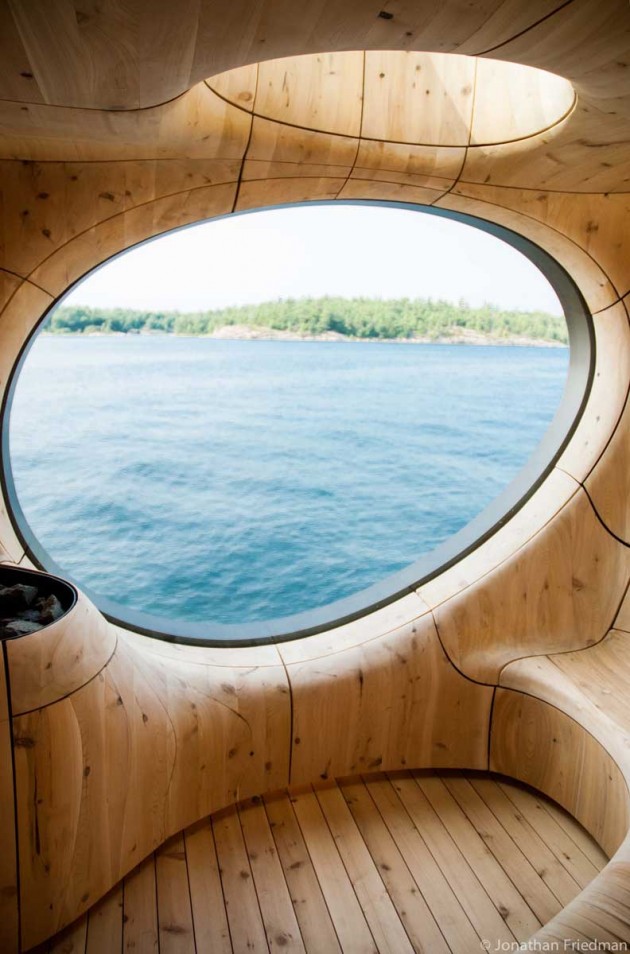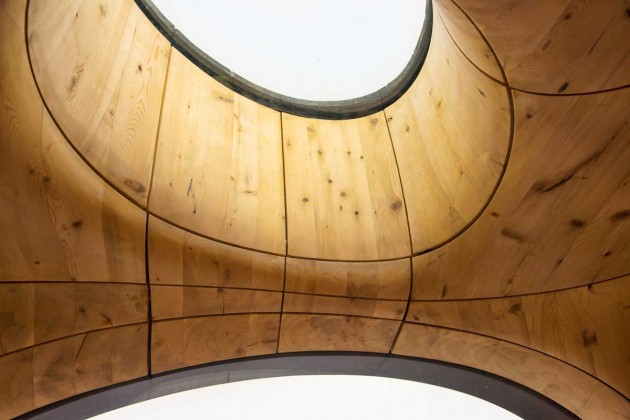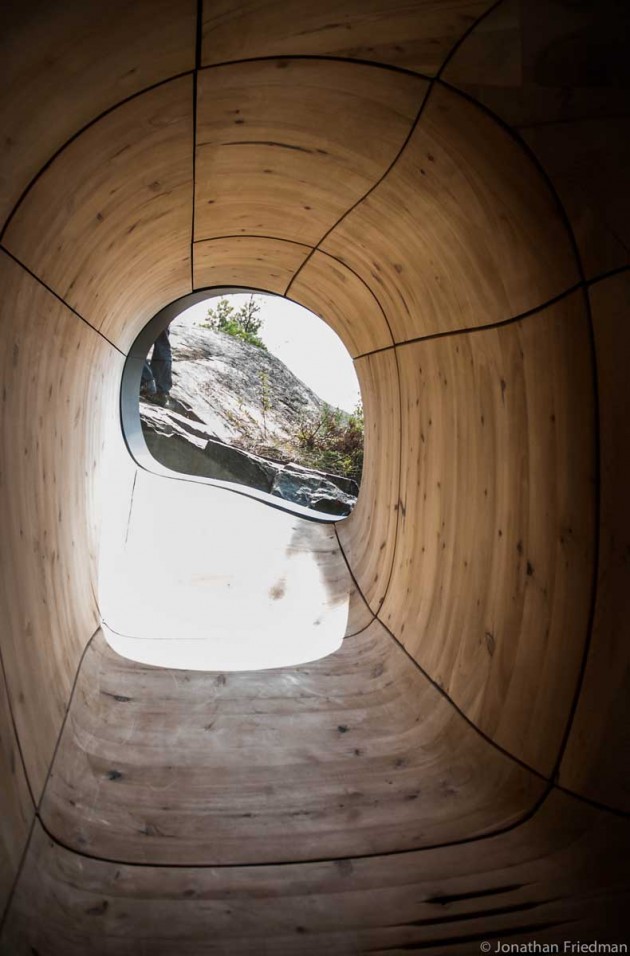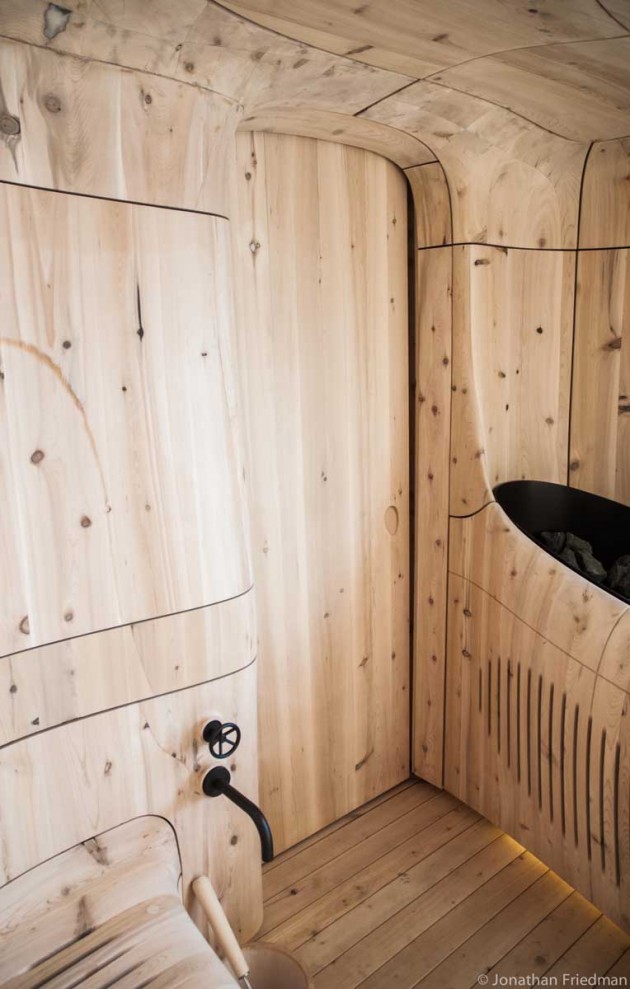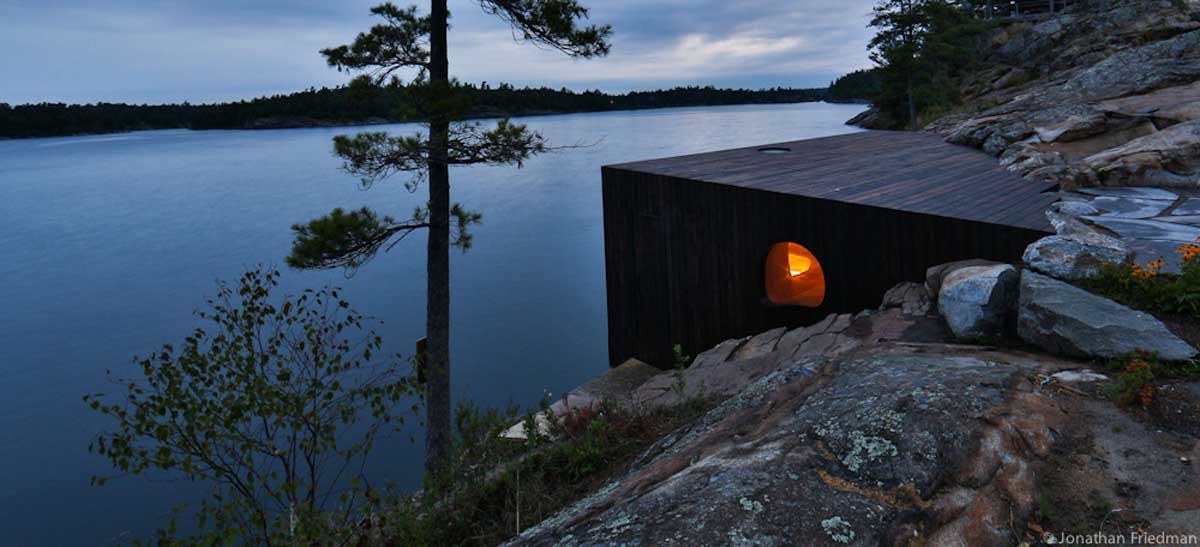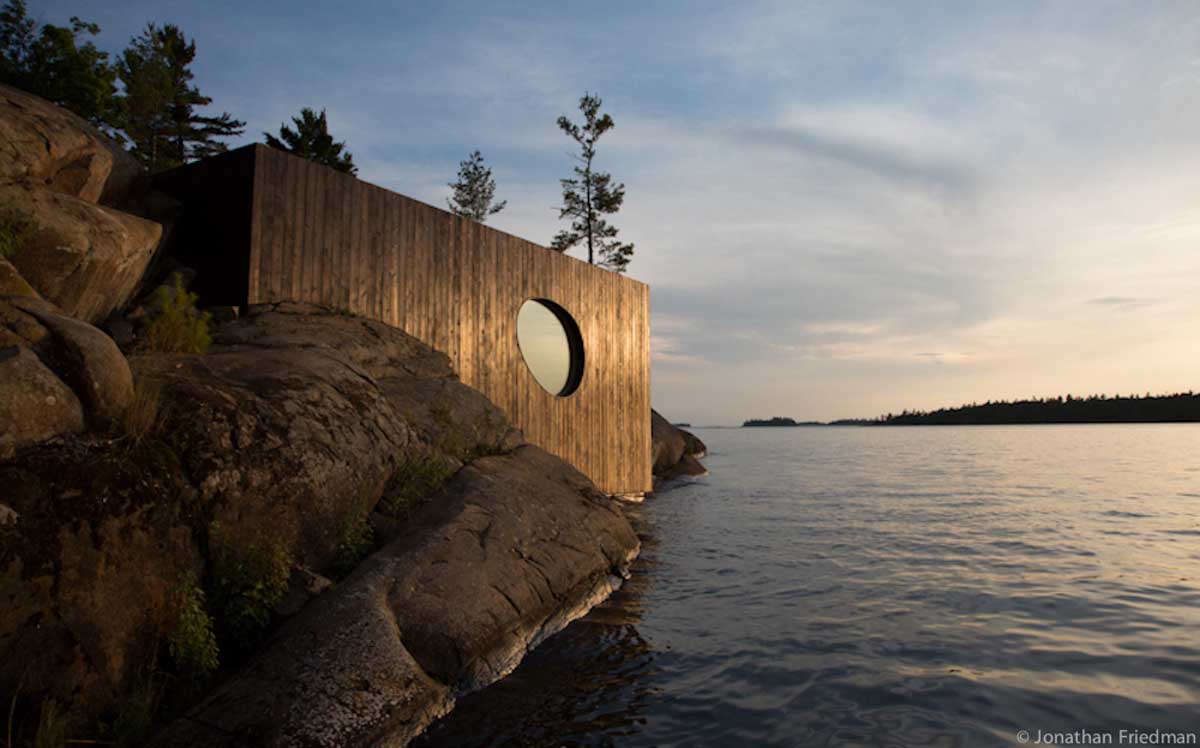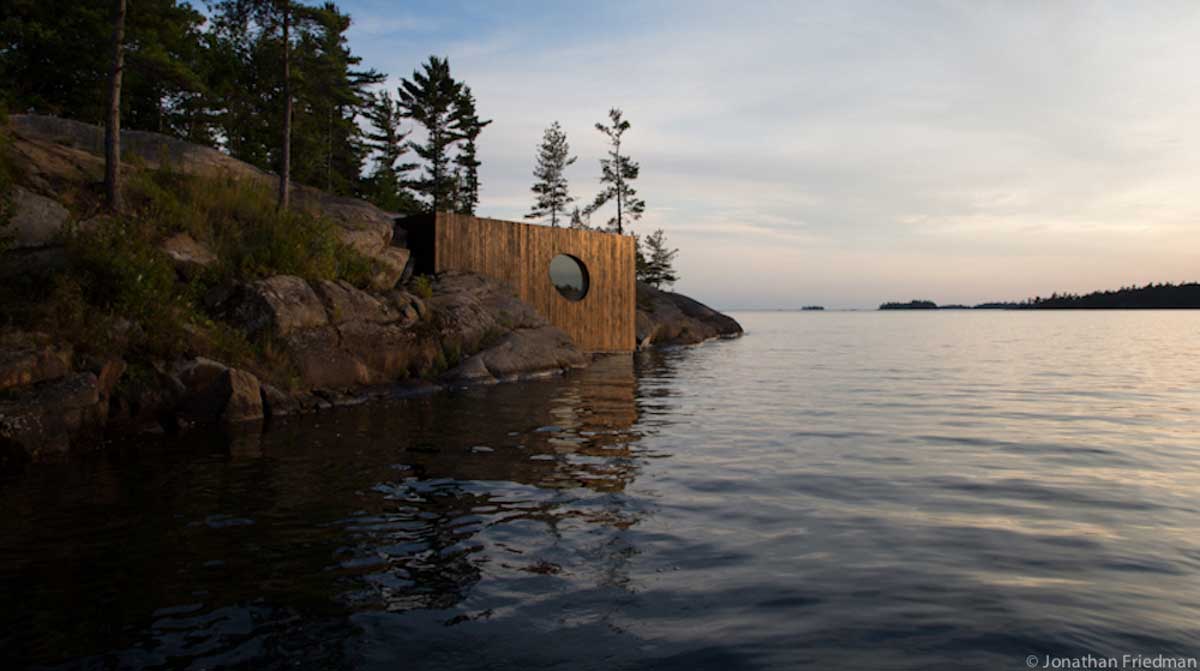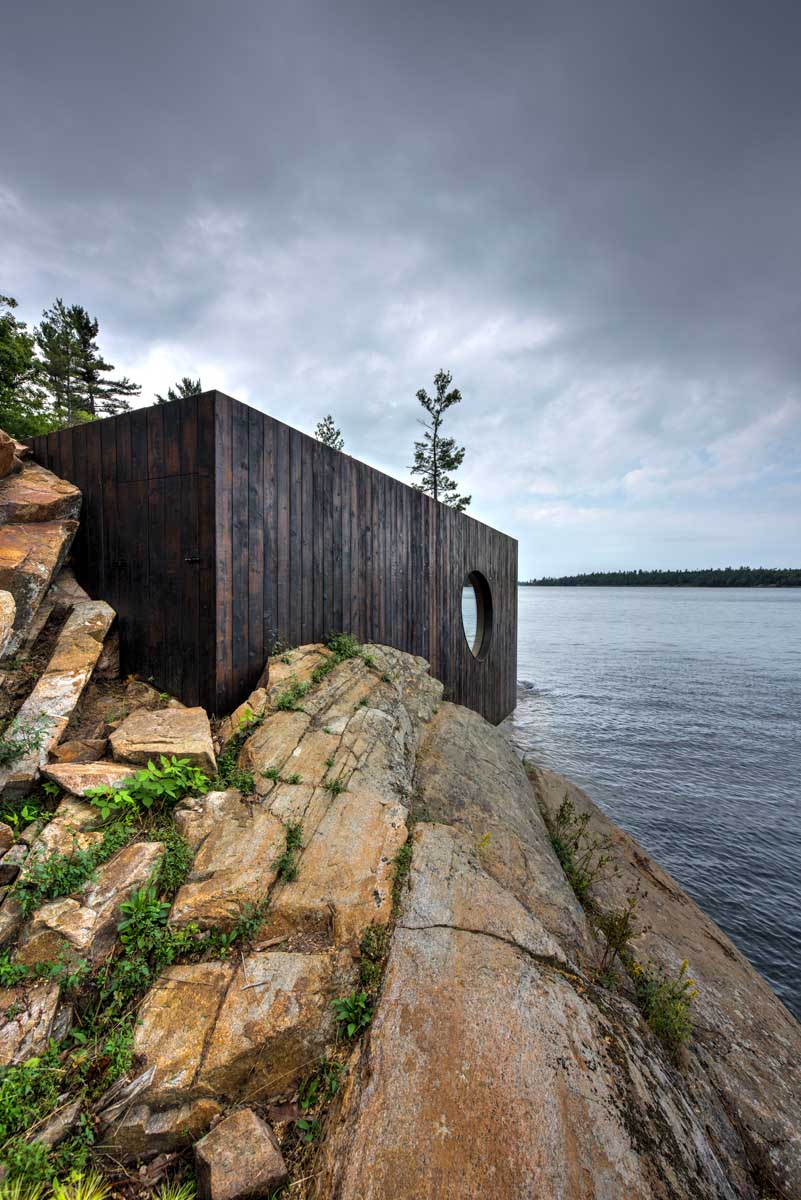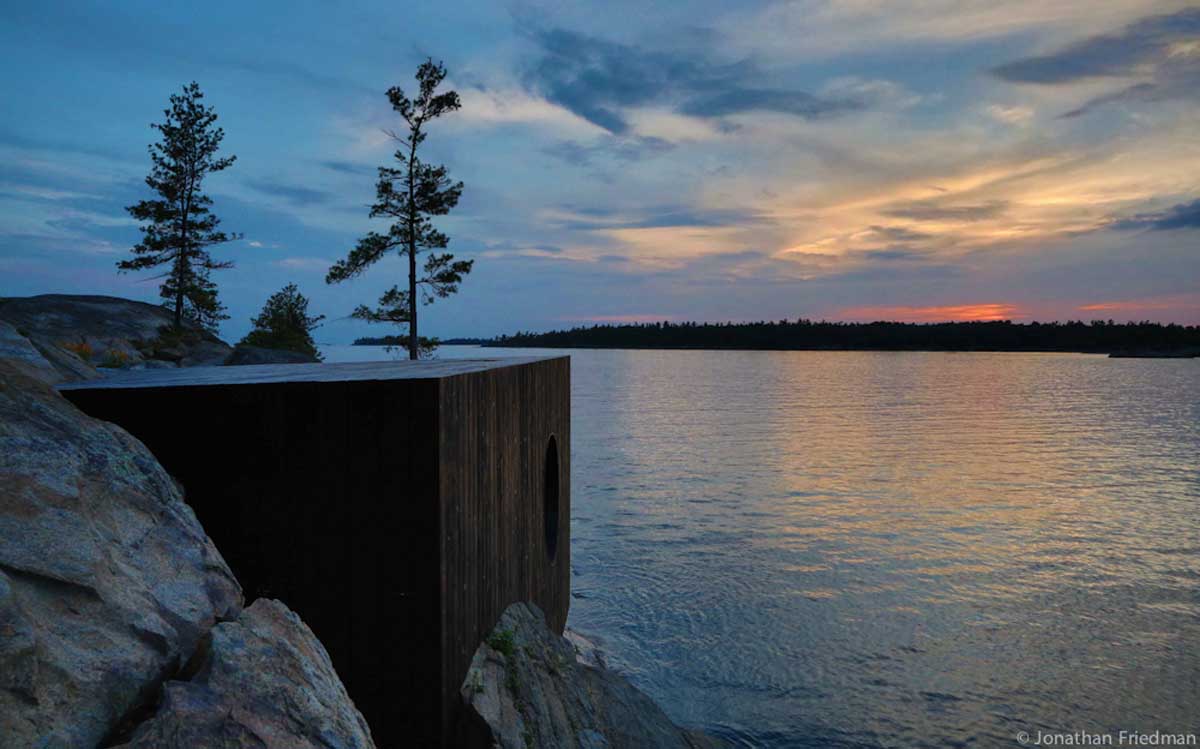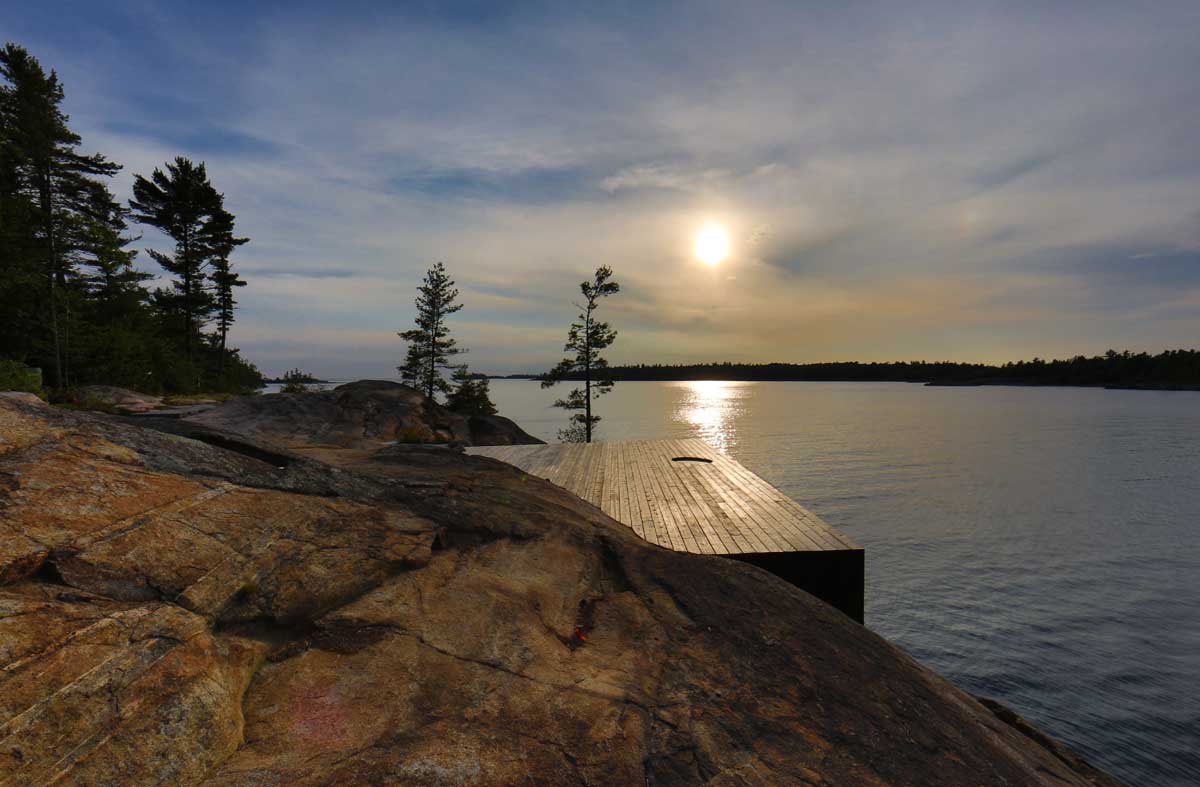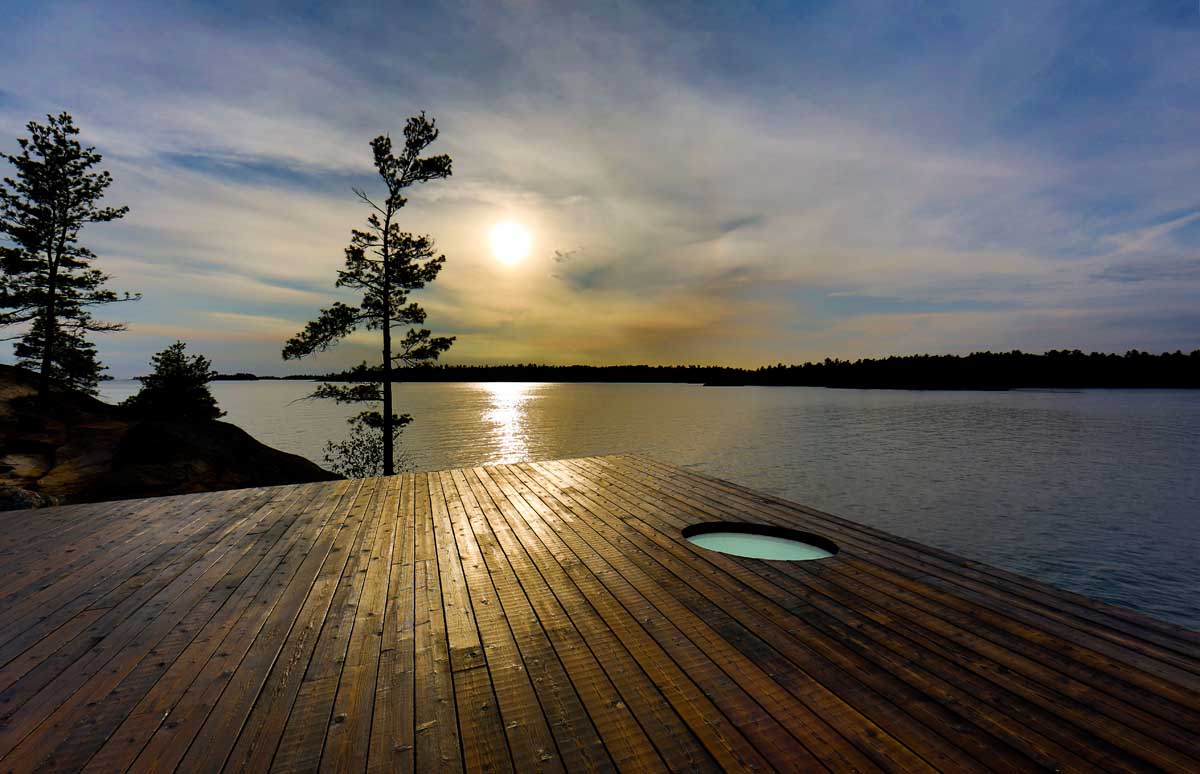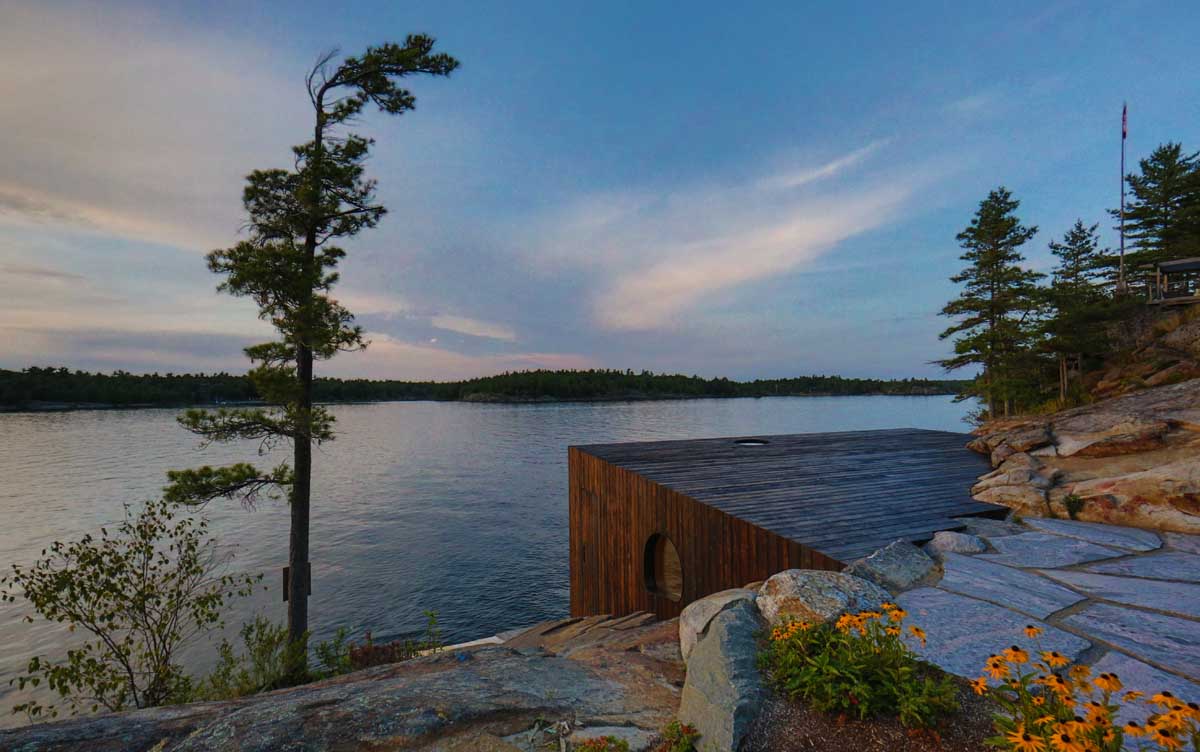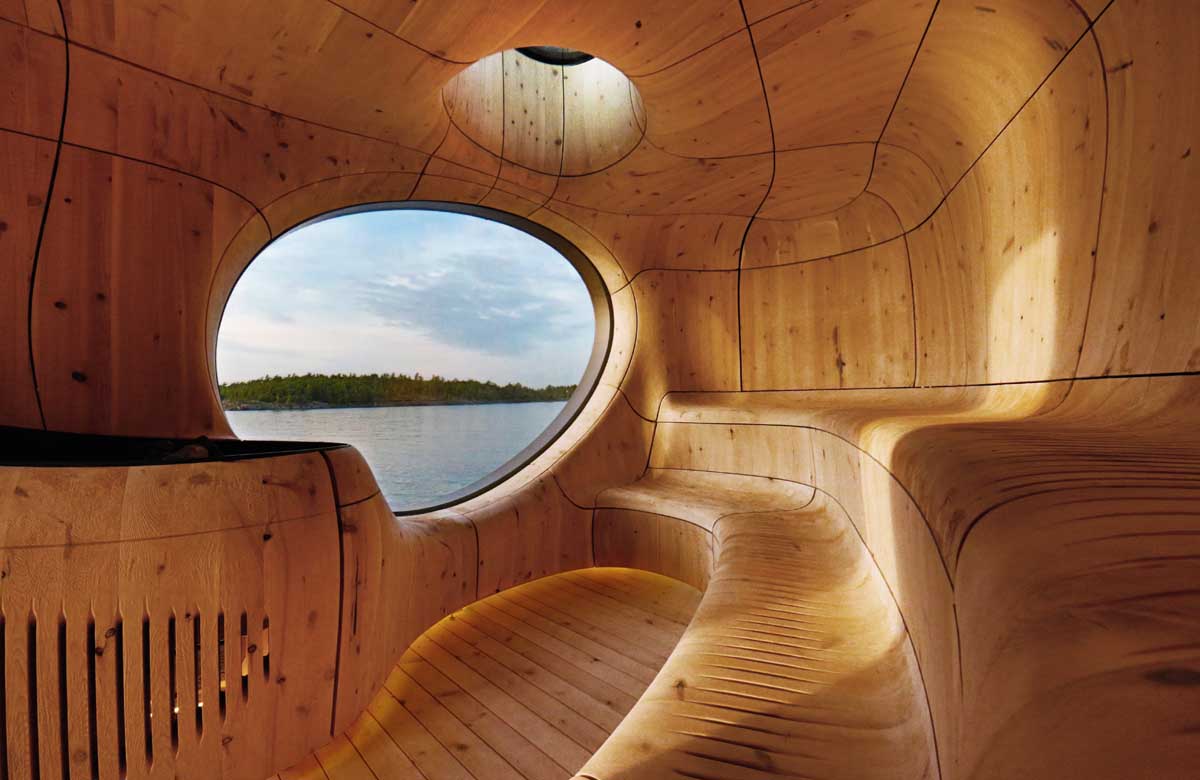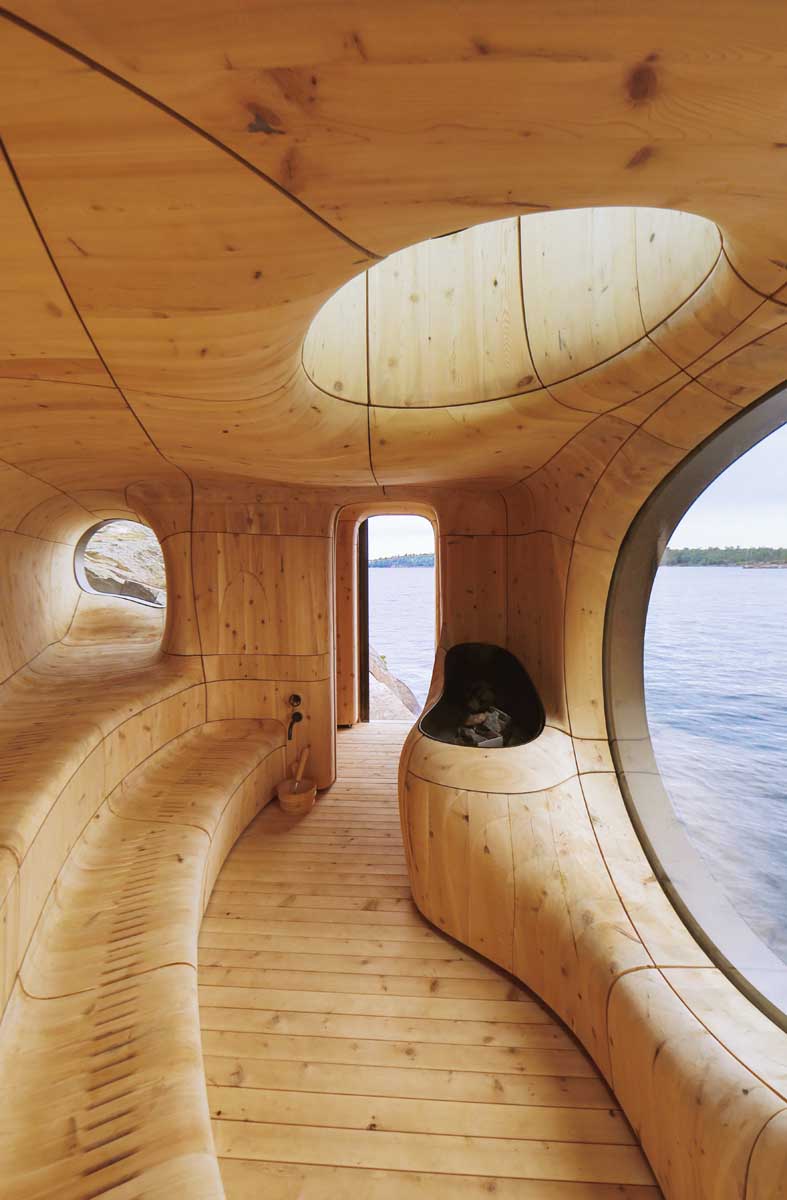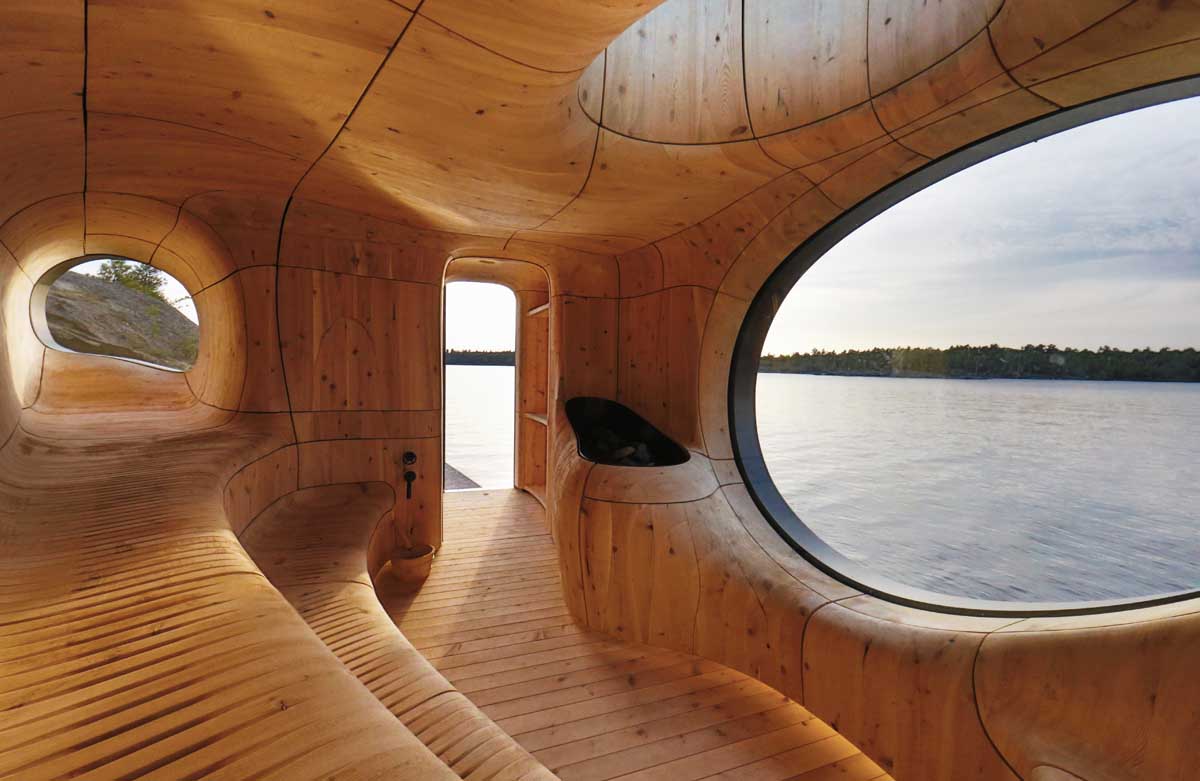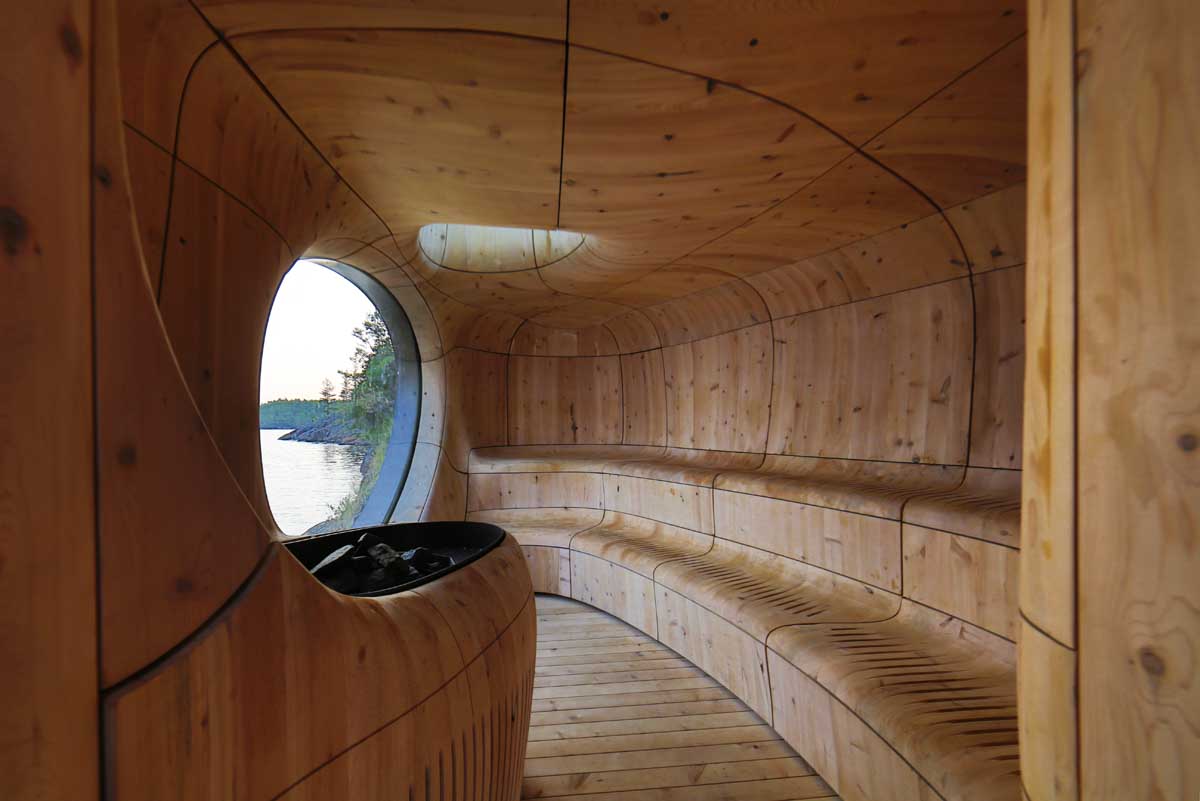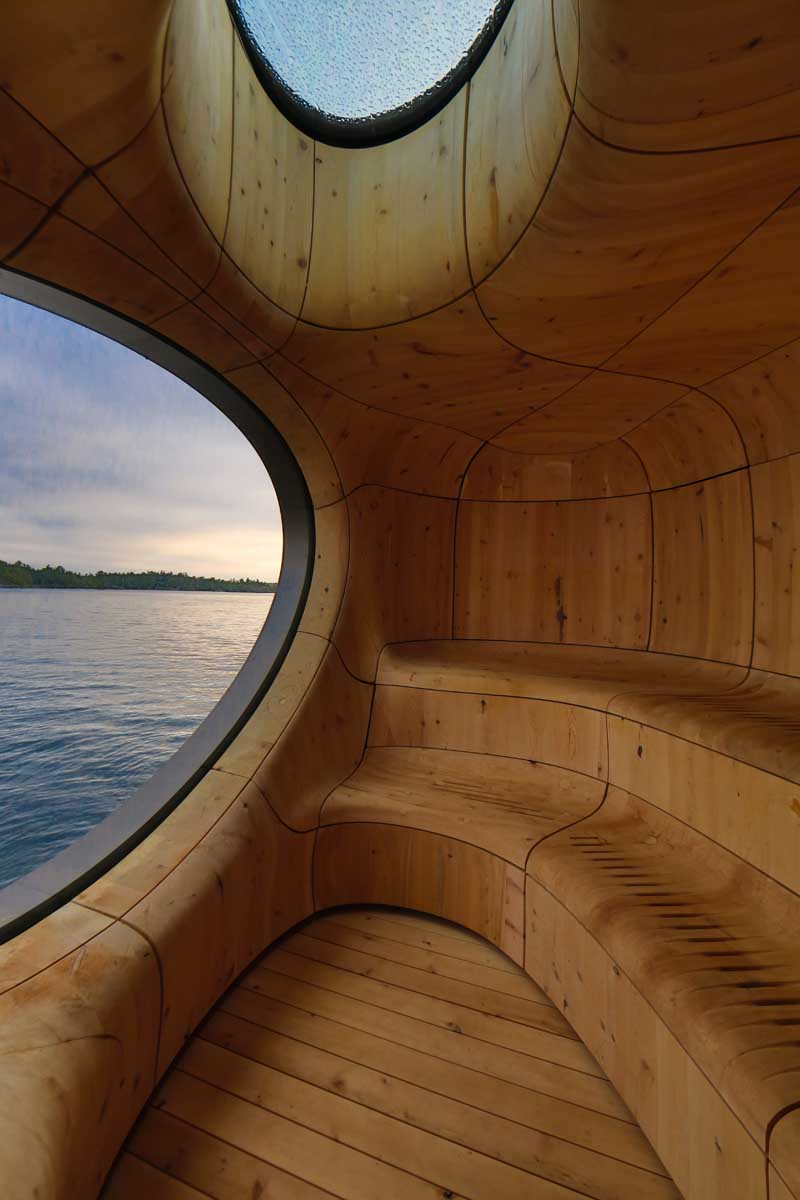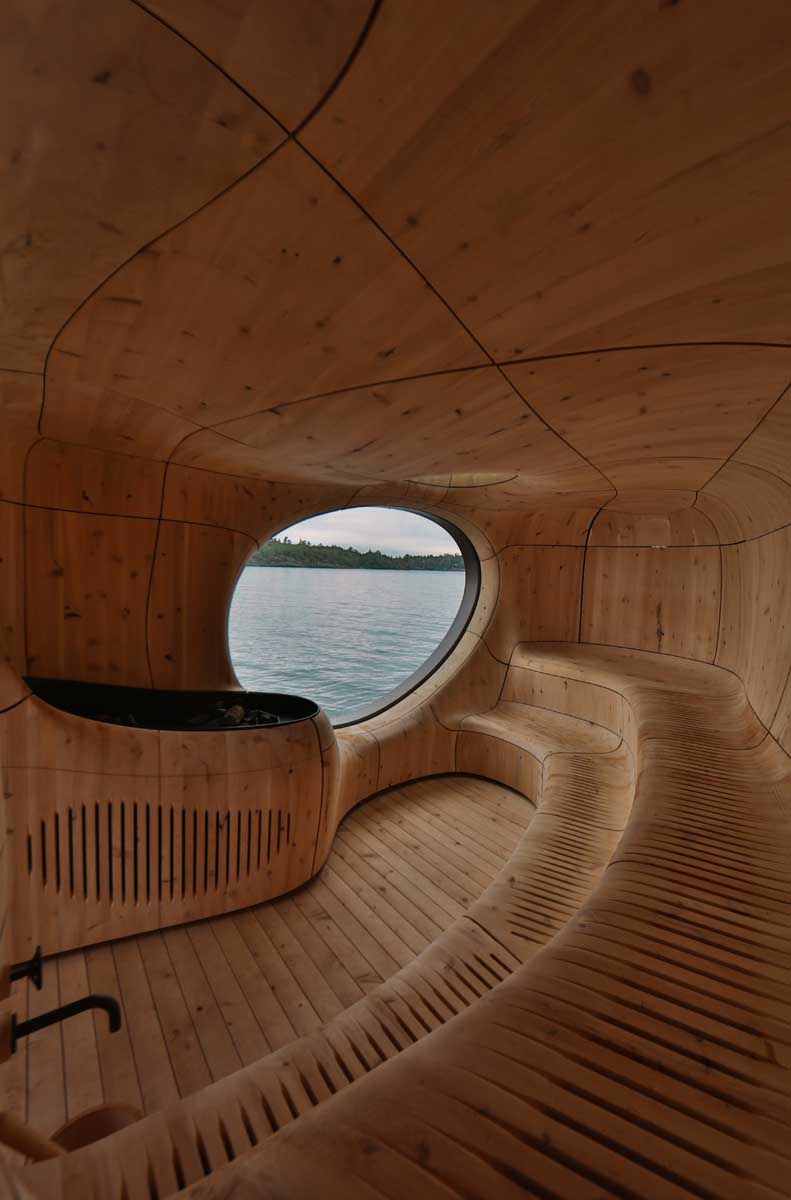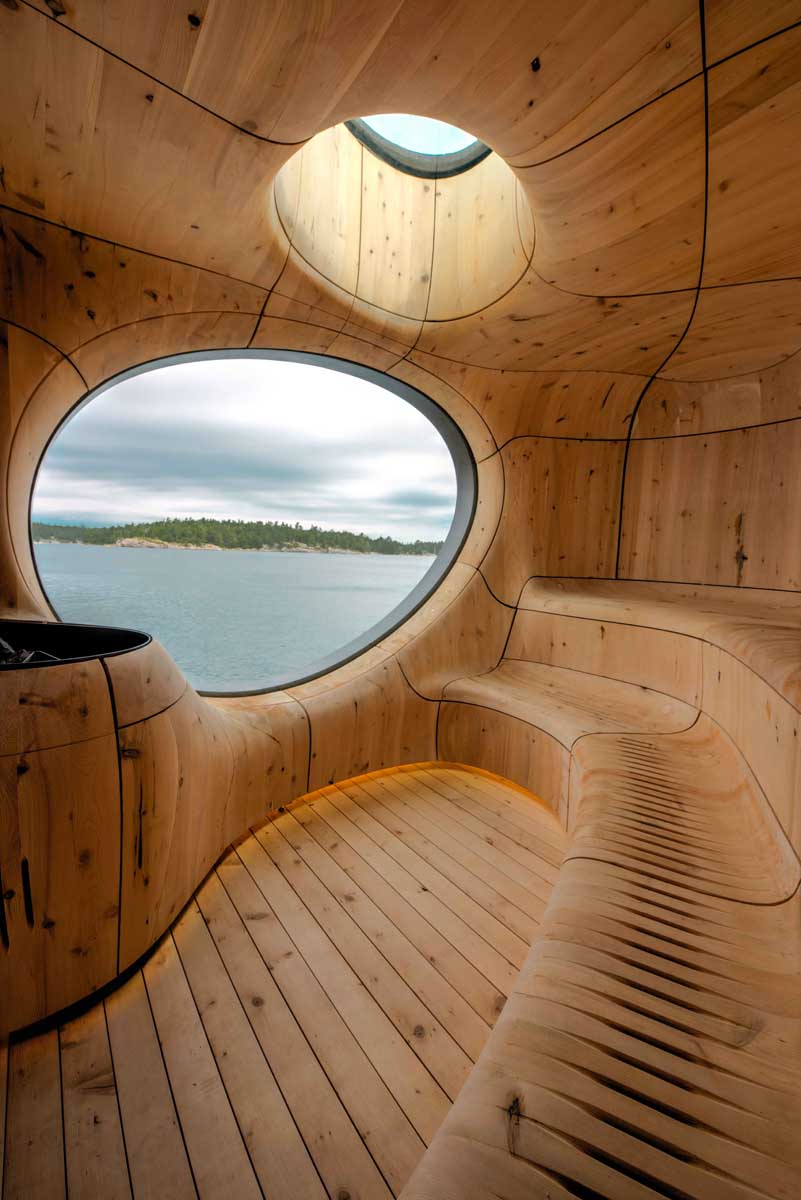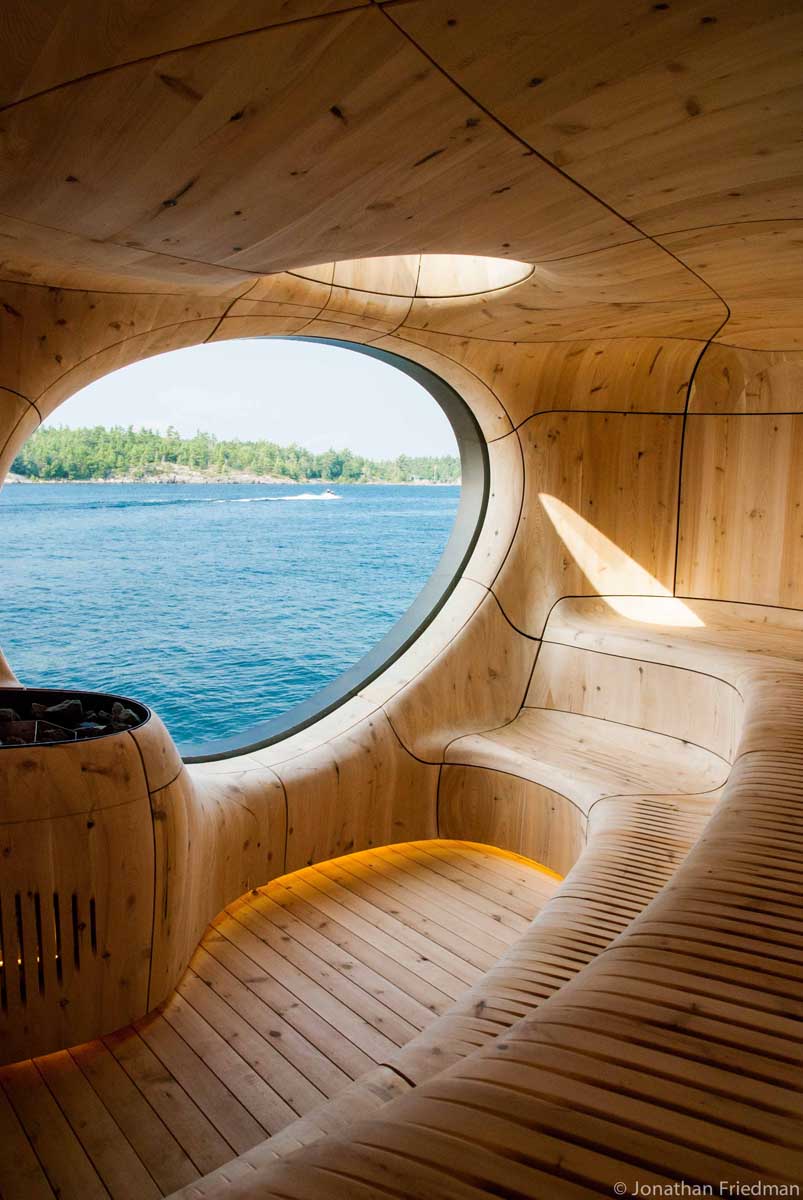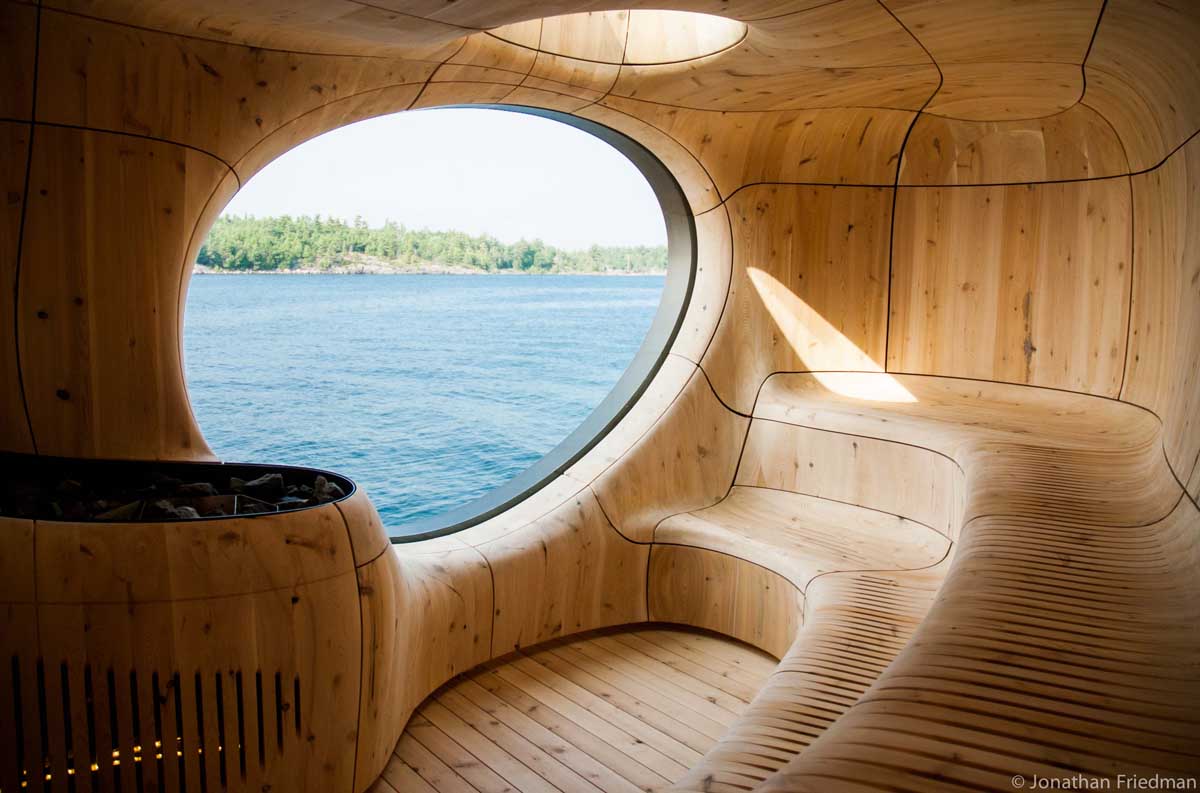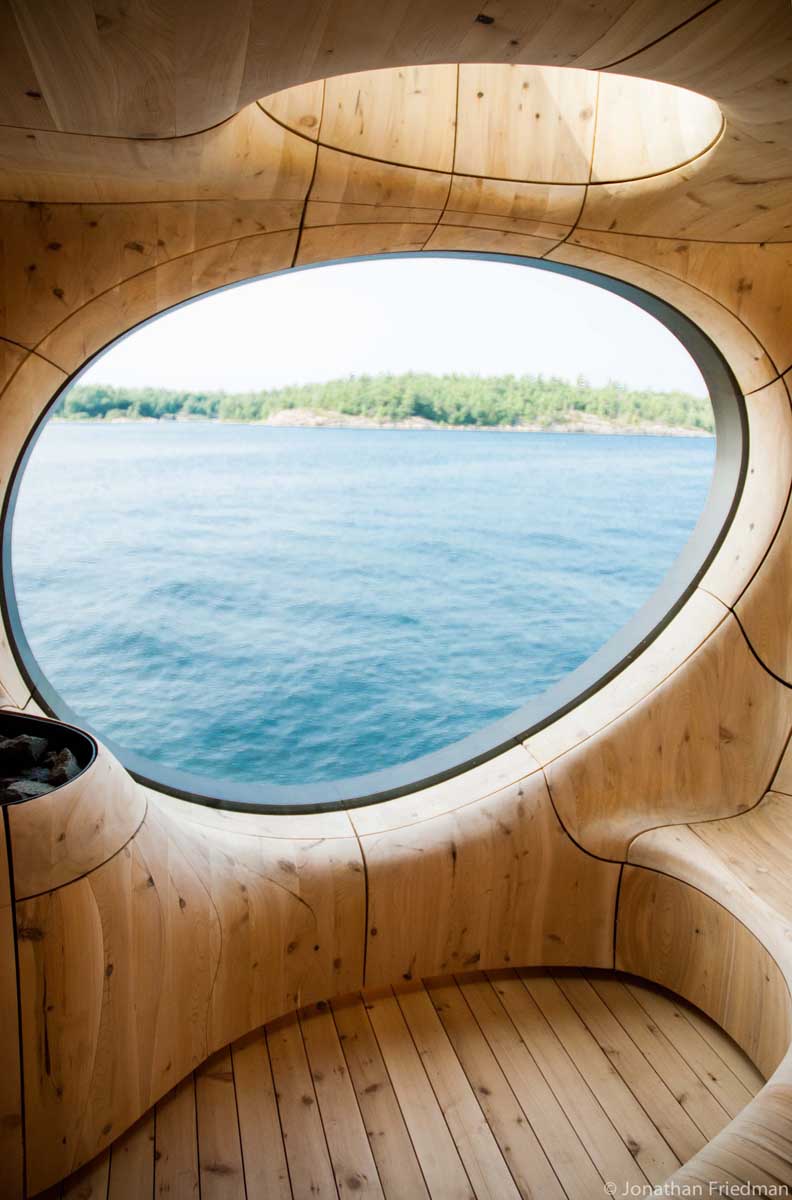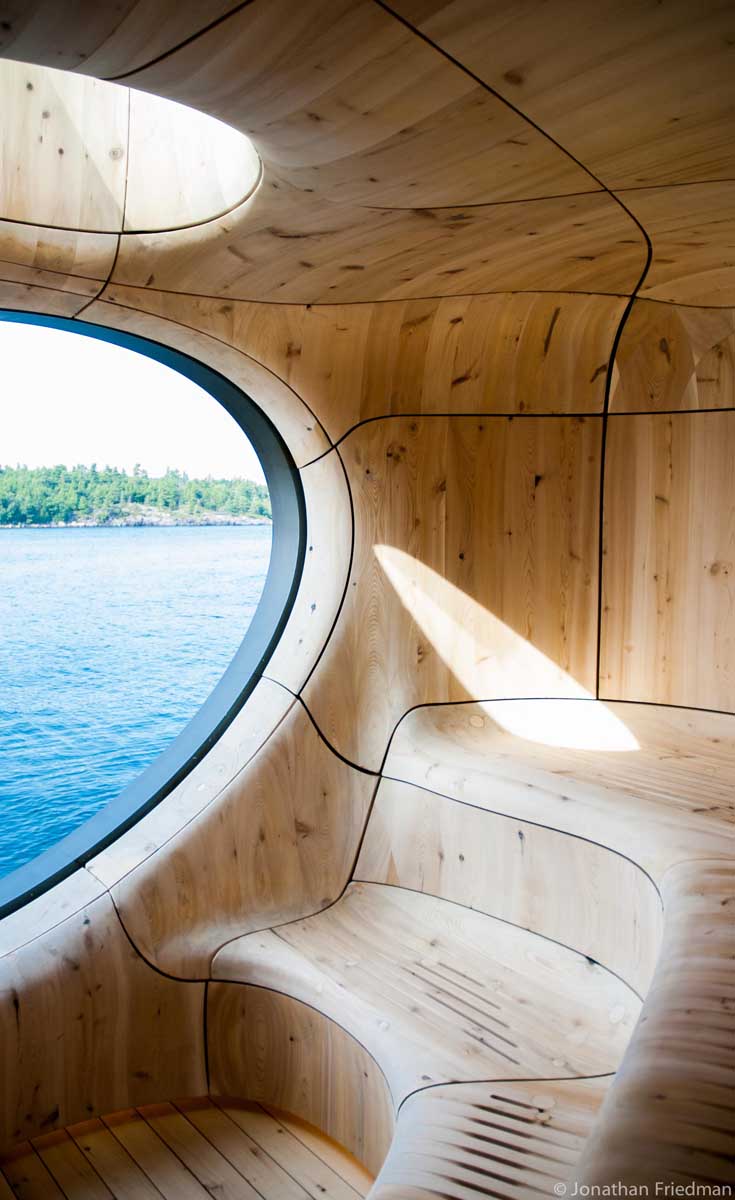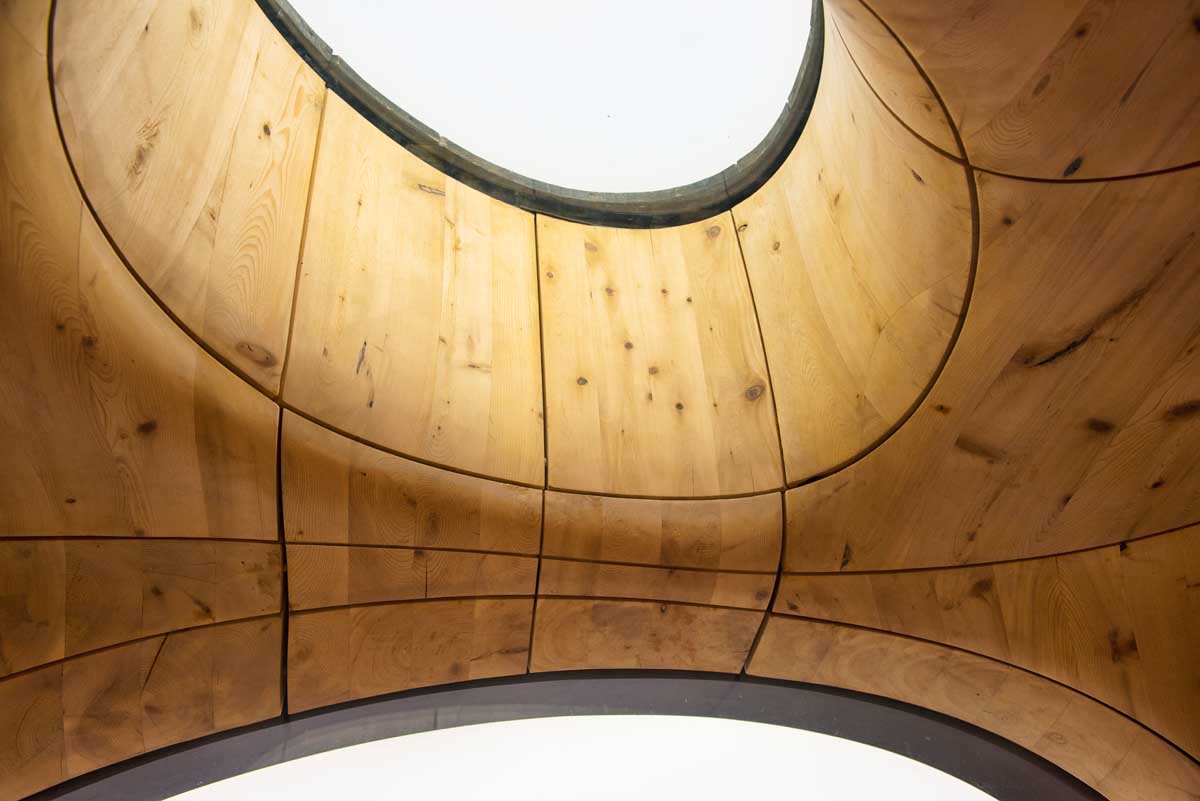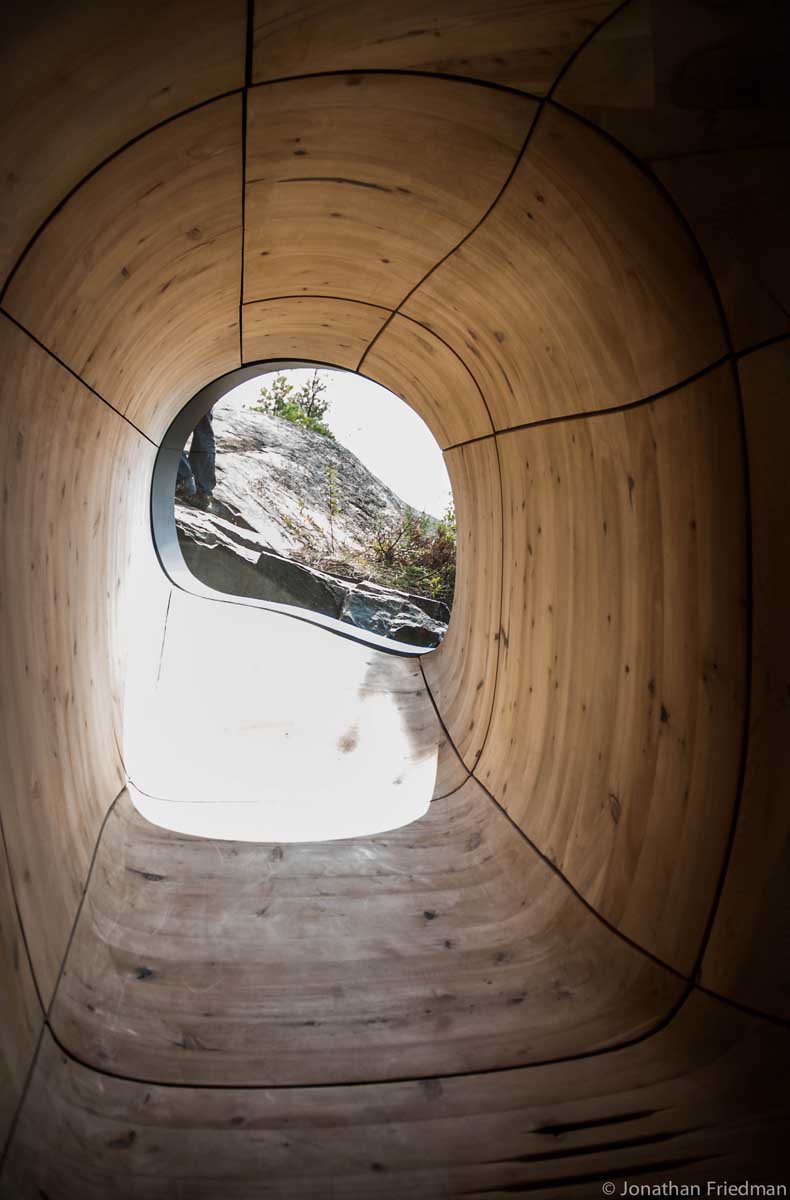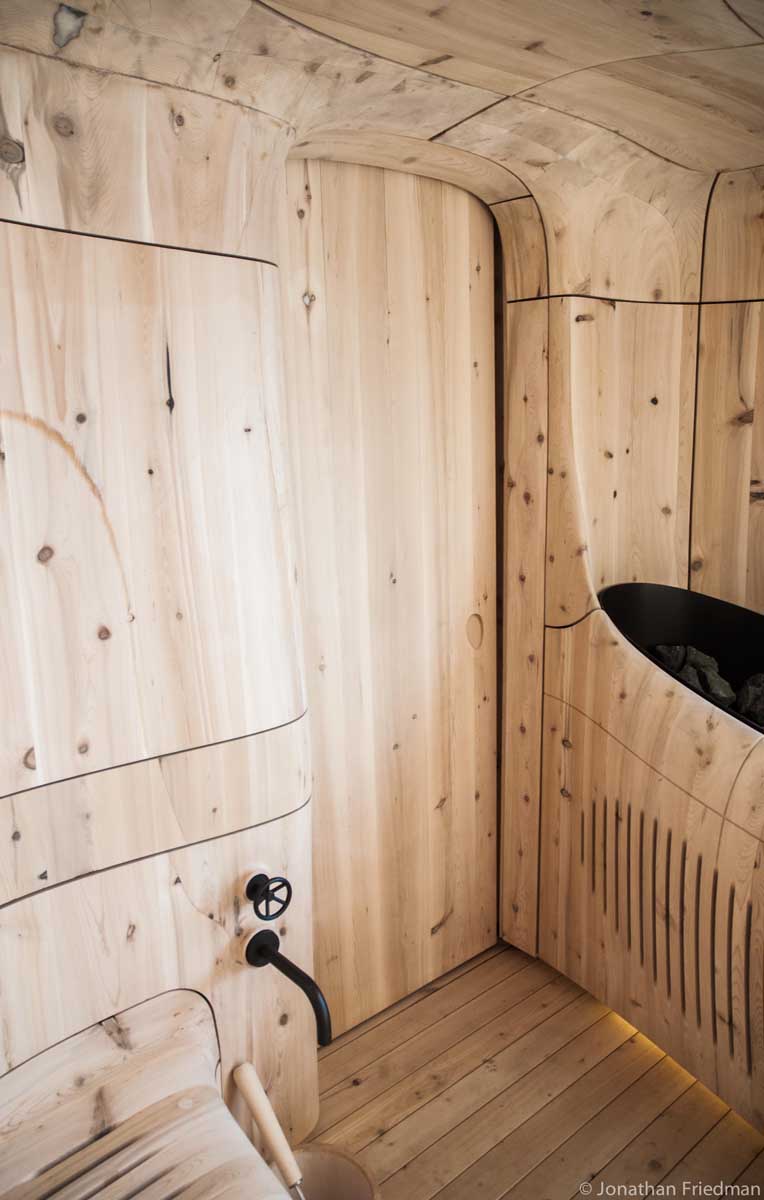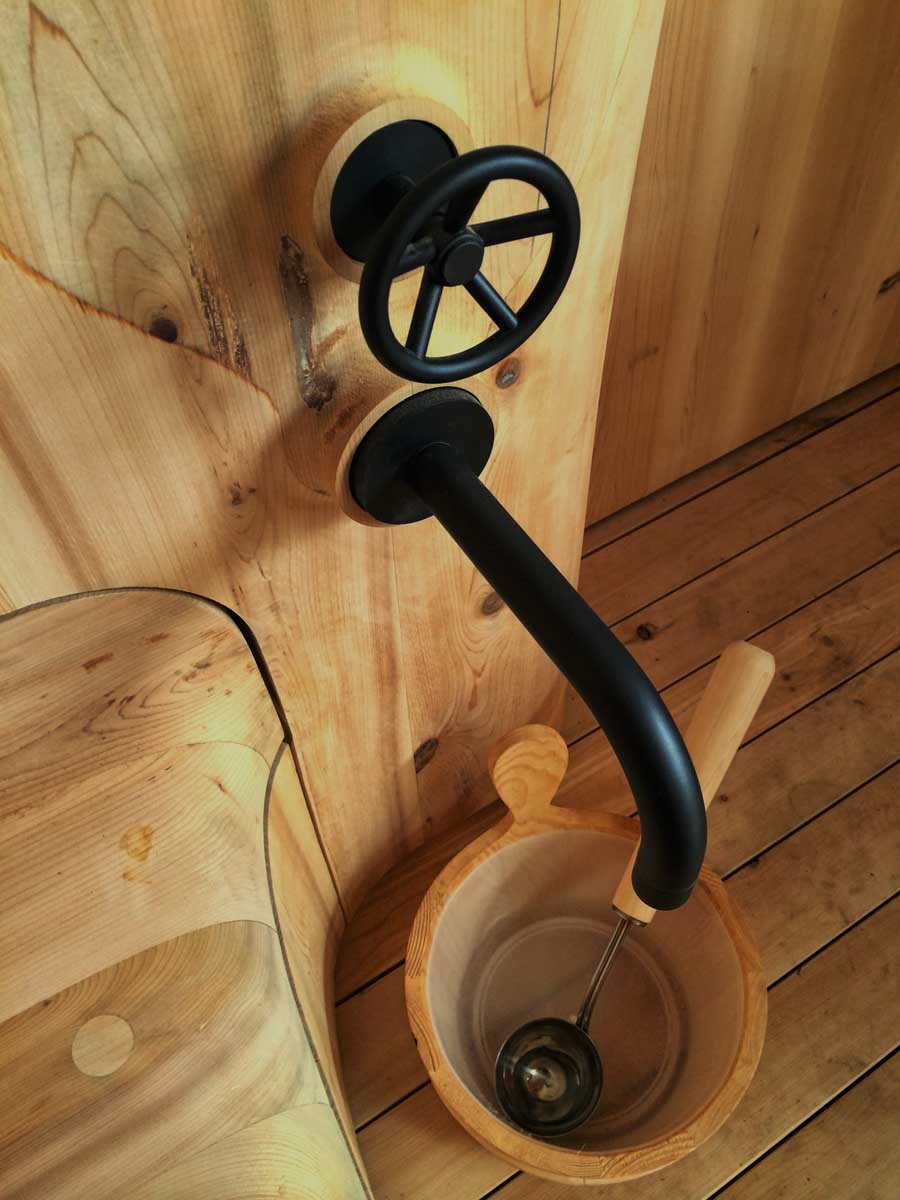PARTISANS have designed Grotto, a sauna located on San Souci Island, in the Georgian Bay area of Ontario, Canada.
From the architect
The blue waters of Lake Huron – located north of Toronto – complement its majestic surroundings and offer a dream-like location for a retreat. A sensual environment, its serene landscape reminds the temporary dwellers of the harmony that exist beyond human possibilities. When PARTISANS team met on site, with a new client for designing and constructing a potential Sauna, they knew that their most prominent challenge was to make a free-standing structure that not only respected, but also matured from the context. Located on Sans Souci Island, the site is a prehistoric large-scale rock formation. Contemplated research was conducted, and through the process a Grotto was set as an inspiration that would inform the design. Grottos, historically, have been known as natural or artifi cial caves that are embedded deep behind the curvature of streams, and thus discovered by those who would take the time to explore.
Understanding the age-old rock, intimately, was the first step toward architecture. As a cascading granite cliff shaped by glaciers into a peninsula, the rock offered both new possibilities and an unobstructed view of the horizon. National Geographic has ranked the sunsets on this site as one of the best in the world. And we were determined to preserve and enhance the experience of it.
The team scanned the rock, using a Leica 3D laser scanner to create multiple CNC’d models in differing scales and materials. Subsequently, an unconventional process of design-play took place, and everyone in our studio collaborated in sculpting the Grotto. Out of roughly fifteen completely different ideas only 4 made the most sense; and the clients—adventurous at heart—selected a scheme that presented both excitement and challenges for the team.
The selected concept for the Grotto prescribed a solid, simple presence on the exterior, while the interior followed dynamic air movements in curvature forms; requiring design solutions. As a result we proceeded to experiment further with the materials, and selected wood, due to its specific properties, as the primary medium. Challenging the standards of current practices in the construction industry, we worked directly with a millwork and steel fabrication partner, MCM Inc., on every detail. Together, we developed a new process of fabrication; utilizing state of the art 3-D technology to scan, model and build the Grotto. The process led to a new-found understanding for the properties of materials. Creating the illusion of a carved interior, we formed the specially selected cedar timber into panels with parallel grains.
As a free-standing sauna, the Grotto uses two high performance ovens that ensure efficiency and control. There are vents and fans in-place that allow the building to breathe seasonally and prevent rot or mold in the structure. The rest of the systems were based on controlled air flow. We used insulation on the building to not only protect its components from heating up or cooling down too quickly, but also to make the Grotto more energy efficient. The specific type of wood, Cedar, was then selected based on a number of factors; such as resistance to rot, aroma, colour, local sources, and quality. The openings were fabricated here in Ontario using double and triple glazed high effi ciency annealed glass to ensure high energy savings and durability. Furthermore, the internal structure of the Grotto was tightly sealed and a layer of energy efficient aluminum foil was adhered to all internal surfaces creating a convective air plenum between the internal wood panels and the space in which they were mounted. This allows for the wood to expand and contract evenly with even heat movement all around. The space behind the wood panels created convection currents that allow the skin to breathe through the ventilation pores that were carved into seats and seams of the cedar panels. The result is a sculpted space, a sensual experience, and a sophisticated exercise in building science.
Architect: PARTISANS
Partisans Team: Alexander Josephson, Pooya Baktash, Jonathan Friedman, Shamir Panchal, Ivan Vasyliv, Betty Vuong, Nathan Bishop, Phil Deck, Kim Bozak
Contractor: Jordan Construction, Chantler Barging
Wood Fabrication and Installation: MCM Inc
Photography by Jonathan Friedman and PARTISANS
